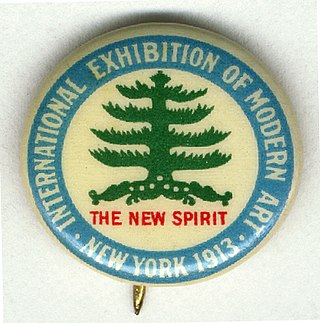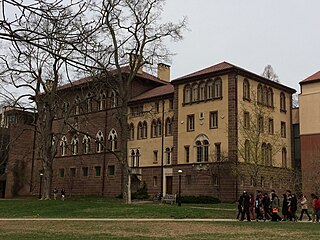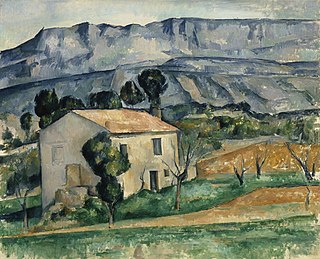
Paul Cézanne was a French Post-Impressionist painter whose work introduced new modes of representation and influenced avant-garde artistic movements of the early 20th century. Cézanne is said to have formed the bridge between late 19th-century Impressionism and early 20th century Cubism.

The Musée d'Orsay is a museum in Paris, France, on the Left Bank of the Seine. It is housed in the former Gare d'Orsay, a Beaux-Arts railway station built between 1898 and 1900. The museum holds mainly French art dating from 1848 to 1914, including paintings, sculptures, furniture, and photography. It houses the largest collection of Impressionist and post-Impressionist masterpieces in the world, by painters including Berthe Morisot, Claude Monet, Édouard Manet, Degas, Renoir, Cézanne, Seurat, Sisley, Gauguin, and van Gogh. Many of these works were held at the Galerie nationale du Jeu de Paume prior to the museum's opening in 1986. It is one of the largest art museums in Europe.

The 1913 Armory Show, also known as the International Exhibition of Modern Art, was organized by the Association of American Painters and Sculptors. It was the first large exhibition of modern art in America, as well as one of the many exhibitions that have been held in the vast spaces of U.S. National Guard armories.
Events from the year 1880 in art.

The White Palace is the official residence of the Yugoslav former royal family. It is located within the Royal Compound, in the Dedinje neighborhood of Belgrade.

George Peter Alexander Healy was an American portrait painter. He was one of the most prolific and popular painters of his day, and his sitters included many of the eminent personages of his time. Born in Boston, he studied in Europe, and over his lifetime had studios in Paris and Chicago.

The Courtauld Gallery is an art museum in Somerset House, on the Strand in central London. It houses the collection of the Samuel Courtauld Trust and operates as an integral part of the Courtauld Institute of Art.

Constantino Brumidi was an Italian painter and a naturalised American citizen, best known and honored for his fresco work, Apotheosis of Washington, in the Capitol Building in Washington, DC.

The United States Capitol building features a central rotunda below the Capitol dome. Built between 1818 and 1824, the rotunda has been described as the Capitol's "symbolic and physical heart".

The Brumidi Corridors are the vaulted, ornately decorated corridors on the first floor of the Senate wing in the United States Capitol.

The Princeton University Art Museum (PUAM) is the Princeton University gallery of art, located in Princeton, New Jersey. With a collecting history that began in 1755, the museum was formally established in 1882, and now houses over 113,000 works of art ranging from antiquity to the contemporary period. The Princeton University Art Museum dedicates itself to supporting and enhancing the university's goals of teaching, research, and service in fields of art and culture, as well as to serving regional communities and visitors from around the world. Its collections concentrate on the Mediterranean region, Western Europe, Asia, the United States, and Latin America.

George Henry Durrie was an American landscape artist noted especially for his rural winter snow scenes, which became very popular after they were reproduced as lithographic prints by Currier and Ives.

The Peacemakers is an 1868 painting by George P.A. Healy. It depicts the historic March 27, 1865, strategy session by the Union high command on the steamer River Queen during the final days of the American Civil War. Although he painted it in at least two versions, the largest was destroyed by fire in 1893, and the second sat unknown in storage for decades. Since 1947, it has been in the White House collection.

Abraham Lincoln is an 1869 oil-on-canvas painting by George Peter Alexander Healy of Abraham Lincoln, the 16th president of the United States.

House in Provence is an oil painting by French artist Paul Cézanne. Created between 1886 and 1890, as of 2012 it is part of the permanent collection in the Indianapolis Museum of Art.

The Arch of Titus is an 1871 oil painting on canvas. It was a collaboration between three American painters: George Peter Alexander Healy, Frederic E. Church, and Jervis McEntee. It depicts the Arch of Titus in Rome, with the Colosseum in the background, and includes portraits of Henry Wadsworth Longfellow and his daughter Edith, and the three artists. The painting is currently on display in the Newark Museum in Newark, New Jersey.

Charles Alexander Loeser was an American art historian and art collector.









































































